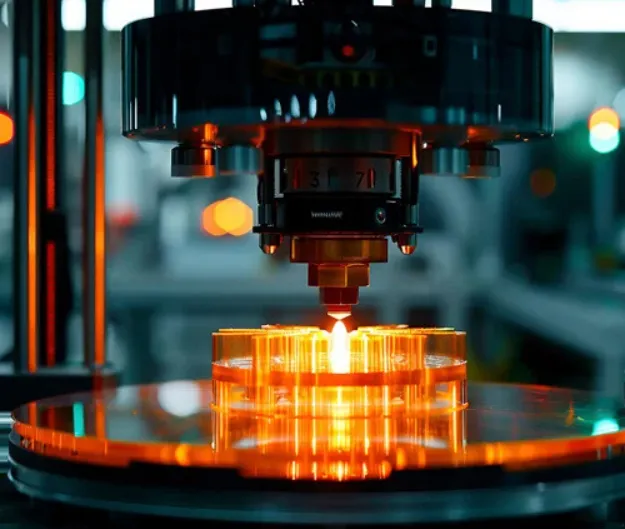Additive manufacturing (AM) has become a game-changer across various industries, enabling highly adaptable production techniques. Even the U.S. Navy has embraced this technology, using 3D printing to create parts for warships and reducing the need for inventory storage. But what exactly is additive manufacturing, and how does it differ from 3D printing?
In simple terms, additive manufacturing is the process of creating products by adding material layer by layer to form a final structure. It typically relies on computer-aided design (CAD) software or 3D scanning technology to guide the production process. This method contrasts sharply with traditional manufacturing, which focuses on mass-producing identical items in high volumes.
Additive Manufacturing vs. 3D Printing: Are They the Same?
While the terms “additive manufacturing” and “3D printing” are often used interchangeably, they essentially refer to the same process. In AM, 3D printers utilize data to build structures by adding materials one layer at a time. This technique helps produce a variety of shapes and designs that would be difficult or impossible to achieve using traditional methods.
Additive vs. Subtractive Manufacturing: A Key Difference
The primary distinction between additive and subtractive manufacturing lies in how materials are processed. Additive manufacturing adds material to the object, building it up as needed, while subtractive manufacturing removes material from a solid block, cutting or shaping it into the desired form. Subtractive methods are commonly used with materials like metal or plastic, but they can generate more waste and require more time to achieve the same results as additive methods.
The Additive Manufacturing Process: 7 Key Methods
There are several techniques within the additive manufacturing space, each offering unique features and advantages:
- Powder Bed Fusion
This method uses a range of techniques like selective laser sintering (SLS) and electron beam melting (EBM) to melt powder material layer by layer. It’s a cost-effective solution for producing complex parts. - Material Jetting
Similar to traditional inkjet printing, material jetting uses 3D printers to deposit materials such as photopolymer resin and wax. This method allows for precise control over color and shape but is limited by the types of materials available. - Binder Jetting
Binder jetting involves the use of a liquid binder to bond metal powders layer by layer. It is often employed for creating metal parts with intricate details. - Vat Polymerization
In this technique, parts are constructed in a vat of liquid resin, which is cured by ultraviolet light in layers. This method is commonly used for highly detailed prototypes. - Directed Energy Deposition
Directed energy deposition (DED) involves melting materials using a laser or electron beam and depositing them onto a work surface. It’s ideal for repairing or modifying existing parts. - Material Extrusion
One of the most common forms of AM, material extrusion uses a heated nozzle to draw polymers from a spool, building parts layer by layer. It’s widely used for prototyping and production of durable parts. - Sheet Lamination
Sheet lamination involves layering and bonding materials like paper or metal sheets, which are then cut into shapes. It’s particularly suited for creating aesthetically appealing products.
Materials Used in Additive Manufacturing
The materials used in additive manufacturing can vary widely, including metals, thermoplastics, ceramics, and even biochemicals. Here’s a breakdown of the most common materials:
- Metals
Metals like titanium, stainless steel, and precious metals such as gold and silver are frequently used in AM for applications ranging from medical devices to aerospace parts. - Thermoplastics
Thermoplastics, such as ABS and PLA, are widely used across industries like medical, automotive, and aerospace. These materials can be melted and reformed, making them ideal for 3D printing. - Ceramics
Ceramics, including tricalcium phosphate and zirconia, are used for their durability and heat resistance. Powdered glass is also commonly used in some AM processes. - Biochemicals
Biochemicals, such as calcium phosphate and silicon, are primarily used for medical purposes, including bone regeneration. Research continues into their potential for tissue engineering and organ creation.
Why Choose Additive Manufacturing?
Additive manufacturing offers several advantages over traditional methods. It allows for the creation of highly complex structures with intricate designs, which might be impossible or prohibitively expensive to produce using conventional techniques. The precision of AM also ensures minimal material waste, which leads to cost savings and a more sustainable production process. Additionally, AM can produce lighter parts without compromising strength, making it ideal for industries like aerospace.
How Long Does Additive Manufacturing Take?
The time it takes to produce an object using additive manufacturing can vary depending on the complexity and size of the item. It could take anywhere from a few hours to several days to complete a part. While the process might seem slow, it can save time in the long run by eliminating the need to assemble multiple components. Plus, it allows for on-demand production, reducing the need for inventory and storage.
Additive manufacturing is transforming the way products are designed and created, offering greater flexibility, less waste, and the potential for innovation. Whether you’re designing a prototype or producing a final product, this technology is changing the manufacturing landscape for good.







